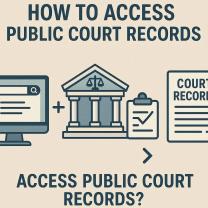How do I create a simple will?
Creating a simple will is a relatively straightforward process, but it's important to approach it with care to ensure that your wishes are accurately and legally documented. Here is a general procedure overview for creating a simple will:
1. Research and Understand Your State's Laws:
- Laws regarding wills can vary by jurisdiction. Before you start, research and understand the specific requirements and regulations for creating a will in your state or country.
2. List Your Assets and Debts:
- Make a list of your assets (property, bank accounts, investments, personal belongings) and debts. This will help you determine what you want to include in your will.
3. Choose an Executor:
- An executor is the person responsible for carrying out the instructions in your will. Choose someone you trust, and discuss your decision with them to ensure they are willing to take on the role.
4. Decide on Beneficiaries:
- Determine who you want to inherit your assets. This may include family members, friends, or charitable organizations. Be specific about what each beneficiary will receive.
5. Consider Guardianship for Minors:
- If you have minor children, consider appointing a guardian who will take care of them in the event of your death. Discuss this responsibility with the chosen guardian beforehand.
6. Draft the Will:
- You have several options for drafting your will:
- Online Templates: Many online services provide templates for creating a basic will. Ensure that the template complies with your state's laws.
- Software Programs: Some legal software programs guide you through the process of creating a will.
- Attorney: Consult with an attorney if you prefer professional guidance. This can be especially important if your situation is complex.
7. Include Necessary Elements:
- A basic will typically includes the following elements:
- Introduction: Identifying the document as your last will and testament.
- Executor Appointment: Naming the person responsible for carrying out your wishes.
- Beneficiary Designations: Clearly stating who will inherit your assets.
- Guardianship Designations: Appointing a guardian for minor children.
- Debts and Taxes: Instructions on how your debts and taxes should be handled.
- Signatures and Witnesses: Most jurisdictions require the will to be signed by you and witnessed by two individuals who are not beneficiaries.
8. Review and Revise:
- Review your will periodically, especially after major life events such as marriage, divorce, or the birth of children. Update it as needed.
9. Sign and Store the Will:
- Sign the will in the presence of witnesses, and have the witnesses sign it as well. Store the original document in a safe place, and inform your executor and close family members where it can be found.
10. Consider Legal Advice:
- While a simple will can often be created without legal assistance, it may be beneficial to consult with an attorney, especially if your situation is more complex or if you have concerns about potential challenges to the will.
11. Inform Relevant Parties:
- Ensure that your executor and relevant family members know about the existence and location of your will.
It's important to note that the information provided here is a general overview, and legal requirements can vary. If you have specific questions or concerns, consider seeking advice from a qualified estate planning attorney to ensure that your will complies with local laws and adequately reflects your intentions.
Steps involved in creating a straightforward will?
Creating a straightforward will involves several key steps:
1. Gather information and resources:
- Consider your assets and liabilities: Make a list of your property and debts, including bank accounts, real estate, vehicles, investments, and outstanding loans.
- Identify potential beneficiaries: Decide who will inherit your assets, including family members, friends, charities, or organizations.
- Research state laws: Each state has specific requirements for valid wills. Familiarize yourself with your state's laws regarding witnesses, signing procedures, and required information.
2. Choose a format:
- Handwritten will: This is the simplest option but may not be legally recognized in all states. Ensure you follow your state's specific requirements for handwritten wills, including proper wording and witness signatures.
- Online will services: Several online platforms offer guided will creation tools for a fee. These services can be helpful and user-friendly, but ensure you choose a reputable platform and understand any limitations of their template forms.
- Lawyer-assisted will: Consulting with a lawyer is the most secure and reliable option, especially if your situation involves complex assets, family dynamics, or specific wishes.
3. Draft and finalize your will:
- Include essential elements: Your will should clearly state your name, date of birth, residence, and intent. It should also specify your chosen executor (the person responsible for managing your estate) and details regarding beneficiary inheritance.
- Clearly define your wishes: Use clear and concise language to avoid ambiguity and potential legal disputes. Be specific about how you want your assets distributed and address any special instructions or requests.
- Sign and witness: Sign your will in the presence of witnesses (typically two) and have them sign and date as well. Ensure you comply with your state's specific requirements regarding witness qualifications and signature procedures.
4. Store your will securely:
- Keep your original will in a safe and secure location, easily accessible to your executor. Consider using a safe deposit box, fireproof file cabinet, or secure online storage service.
- Inform your executor and beneficiaries about the location of your will.
Additional tips:
- Review and update your will regularly: As your life circumstances change (marriage, birth, death of beneficiaries, etc.), you may need to update your will to reflect your current wishes.
- Consider setting up a trust: If your estate is complex or you have specific wishes regarding inheritance distribution or asset management, establishing a trust alongside your will may be beneficial.
- Seek professional legal advice: While creating a straightforward will can be relatively simple, consulting with a lawyer can ensure your will is legally sound and addresses your specific needs and wishes effectively.
Remember, a valid will ensures your wishes are carried out after your death, protecting your loved ones and providing peace of mind. By following these steps and seeking professional guidance if needed, you can create a clear and effective will that safeguards your legacy.













